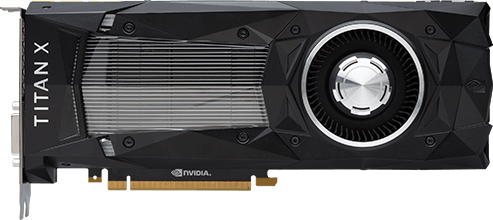“Do I need a graphics processor?”
The answer is yes. All computers have graphics cards whether they are integrated into the CPU, a separate GPU chip, or a dedicated card that is plugged into the motherboard. When most people think of graphics cards they think of the latter. When you hear someone say “I bought a new video card for my computer” or “I need a new graphics card to play Uncharted 8“, they’re talking about a dedicated GPU.
The biggest benefit of a dedicated GPU is performance. Not only does a dedicated graphics card have a sophisticated computer chip designed explicitly for the task of processing video, the GPU, but it also has dedicated RAM for the task (which is typically faster and better optimized for the task than your general system RAM). This increase in power benefits not only the obvious tasks (like playing video games) but also makes tasks like processing images in Photoshop smoother and faster.
In addition to radical performance increase, dedicated GPU cards also typically offer a wider and more modern variety of video ports than your motherboard. While your motherboard may only have a VGA and a DVI port, your dedicated GPU might have those ports plus an HDMI port or even duplicate ports (like two DVI ports, which allows you to easily hook up multiple monitors).
Sounds good, right? Way better performance, ports, ports, and more ports, what could be better? While all those things are awesome, there’s no such thing as a free lunch. First and foremost, there’s the matter of cost. A midrange GPU can run anywhere from $250-500, and cutting edge models can cost up to $1000 (though they’re rarely worth the price to performance ratio they offer). If all you need is something simple to run two monitors, GPUs based off older designs will run you around $50-100.
So Do You Need a Dedicated GPU?
So now you know how a dedicated GPU compares to its integrated cousin, but when should you make the jump to a dedicated graphics card?
While the process of picking a specific graphics card over any other graphics card is fairly complex and you may spend quite a bit of time comparing stats and wringing your hands hoping you’re getting the best possible deal, the process of deciding whether you need an dedicated GPU in the first place is pretty darn simple. Let’s look at the two questions that really matter in the decision process.
Can Your Current Setup Handle the Games and Graphic-Centered Apps You Use?
The first and foremost reason people get a dedicated GPU is for gaming. You don’t need a dedicated GPU for watching video (even razor sharp HD video). You don’t need a dedicated GPU for email, word processing, or any Office suite type apps. You don’t even need a GPU for playing older games, as today’s integrated graphics are far better than the dedicated video cards of decades past. You do, however, need a dedicated GPU for playing calculation-intensive modern 3D titles in all their silky smooth glory.
Can Your Current Setup Support the Number of Monitors You Want?
Although most people buy a GPU for gaming, there’s also a sizable (albeit much smaller) number of people who buy a dedicated graphics card in order to expand how many monitors their computer will support.
Without a dedicated graphics card, adding extra monitors to your computer is kind of a crapshoot. Some motherboards support using multiple video ports–e.g. the motherboard has a VGA and a DVI port and you can toggle a setting in the BIOS to use both of them–but most motherboards don’t.
If you answered no to either of those questions, then a dedicated graphics card will likely solve your problems!


No responses yet